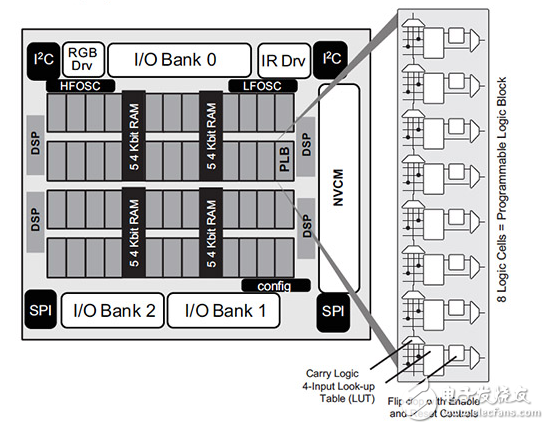
资料下载

MCU对FPGAs提高系统效率
MCU对FPGAs提高系统效率
FPGA已经变得如此有效,他们越来越多地用于连接微控制器来提高系统的整体效率。使用包括在一个最小的电路板空间添加额外功能,添加高效处理复杂算法的前端,聚集多个外部设备,将高性能单片机或需要适应现有的设计,新的接口要求的“胶水”的逻辑,FPGAs提供了额外的灵活性,往往缺乏标准的MCU。本文将回顾一些在FPGAs和MCUs的“配对”如何提高系统效率的最流行的应用程序,通过降低功耗,减少电路板空间,改善加工性能,或接口的灵活性,可以大大提高你的下一个设计。
作为MCU配套设备的FPGA
你选择的MCU有多少次你的设计不具备你所需要的所有接口通道?或者也许你最初选择的MCU正好适合,但一个新的要求来了,因为你最好的客户想要一些额外的接口,为他们的最新设计。你可以使用一个更复杂的单片机,但这可能导致显著的板空间增加(因为这是一个高引脚数封装只可用),增加功率(因为它是唯一可与更多的闪存和SRAM比你真的需要),或更高的成本(包括以前的原因)。

One way around this dilemma is to plan for the need for additional interfaces by adding an FPGA alongside your MCU. The FPGA can easily provide additional interfaces, and just the ones you need, while limiting increases in board space, cost and power. In fact, when compared to the option of using a more complex MCU, you typically end up with less board space, less cost, and less power.
For example, the Lattice iCE40 ultra-low-power FPGAs can provide up to 26 signal IOs in a very small 2.078 mm by 2.078 mm board footprint, and because these devices are configured via on-chip NVM, you do not require extra board space for a configuration device. These FPGAs also have two dedicated I2C interfaces and two dedicated SPI interfaces with plenty of configurable logic to add as many more interfaces as your application would need (until you run out of pins)。 A block diagram of the Lattice ICE5LP1K-SWG36ITR50 is shown in Figure 1.
声明:本文内容及配图由入驻作者撰写或者入驻合作网站授权转载。文章观点仅代表作者本人,不代表电子发烧友网立场。文章及其配图仅供工程师学习之用,如有内容侵权或者其他违规问题,请联系本站处理。 举报投诉
- 相关下载
- 相关文章




